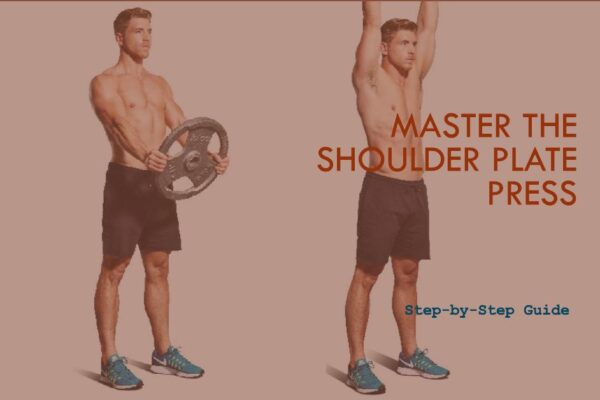Introduction
The low to high cable chest fly is an upper body exercise that targets the pectoralis major (chest) muscles. This exercise can be done using a cable machine, which consists of a weight stack and pulley system with adjustable handles or cables attached.
Cable chest flies are often incorporated into strength training routines for their ability to increase muscle mass and improve overall functional strength. In this guide, we will discuss the proper form for the low to high cable chest fly and its variations, as well as its benefits and precautions.

Understanding the basics of a chest fly
The chest fly motion mimics the movement of a bird flapping its wings, hence the name. The exercise involves bringing the arms together in front of the body and then returning them to the starting position. While this can be done using dumbbells or resistance bands, cable machines provide constant tension throughout the entire range of motion, making it an effective choice for targeting specific muscles.
Diving into Low to High Cable Chest Fly
The Low to High Cable Chest Fly begins with the individual standing between two low pulley cable machines, grabbing the handles with an underhand grip. The primary muscle group targeted by the low to high cable chest fly is the pectoralis major, particularly the upper (clavicular) part. This muscle is crucial for movements of the shoulder joint. Secondary muscles involved include the anterior deltoids (front of the shoulders) and the muscles in your arms such as the biceps and triceps. The core muscles also come into play, providing stability throughout the movement.

| Muscle Group | Specific Muscles | Role |
|---|---|---|
| Primary Muscles | Pectoralis Major (Chest) | Responsible for the movement of the shoulder joint. In this exercise, it helps in bringing the arms across the body. |
| Secondary Muscles | Anterior Deltoids (Front Shoulders), Triceps | Assist the pectoralis major in movement and provide additional power and stability. The anterior deltoids help with shoulder flexion while triceps assist with arm extension. |
| Stabilizers | Biceps, Latissimus Dorsi (Back), Rhomboids | These muscles help stabilize the body and maintain proper form during the exercise. They prevent unnecessary movements and keep the body in position. The biceps control the speed of arm movement, latissimus dorsi stabilizes the back and rhomboids stabilize the shoulder blades. |
Step-by-step guide to perform Low to High Cable Chest Fly
- Start by adjusting the pulleys on the cable machine to a low position.
- Stand in the center of the machine with your feet shoulder-width apart and slightly bent knees.
- Grasp the handles with an overhand grip, palms facing up.
- Keep your elbows slightly bent and your arms extended out to your sides at shoulder height.
- Take a deep breath and engage your core.
- Slowly bring your hands together in front of your chest, making a hugging motion.
- Squeeze your chest muscles at the top of the movement and hold for a second.
- Exhale as you slowly return to the starting position, keeping a slight bend in your elbows throughout the movement.
- Repeat for the desired number of repetitions.
Pro tips:
- Maintain Posture: Ensure your back is straight and core engaged throughout the exercise. This helps in maintaining balance and prevents undue strain on your lower back.
- Control the Motion: Focus on controlling the cables during both the upward sweep and the return. Quick, jerky movements can lead to injury and are less effective in muscle building.
- Don’t Lock Your Elbows: Keep a slight bend in your elbows during the exercise. This reduces strain on your joints and integrates more muscle fibers into the movement.
- Breathe: Remember to breathe during your workout. Inhale as you return to the starting position and exhale as you perform the upward sweep.
- Start with Low Weight: If you are new to this exercise, start with a lower weight to master the proper form. Once you’re comfortable, gradually increase the weight.
Incorporating Low to High Cable Chest Fly into your regular workout routine
The Low to High Cable Chest Fly is a great exercise for targeting the chest muscles and can be incorporated into your regular workout routine in various ways. Here are some ideas on how to include this exercise in your workout plan:
- As part of a chest focused day: You can add the Low to High Cable Chest Fly as an additional chest exercise on a day specifically dedicated to working on your chest muscles. This can be done after performing your regular chest exercises such as bench presses or push-ups.
- In a full body workout: The Low to High Cable Chest Fly can also be included in a full body workout routine, where you target different muscle groups each day. For example, you can add this exercise on a leg day or back day to add variety and work on different muscle groups simultaneously.
- Superset with another exercise: Another way to incorporate the Low to High Cable Chest Fly is by supersetting it with another chest exercise. This means performing one set of the Low to High Cable Chest Fly followed by a set of another chest exercise, such as dumbbell flies, without resting in between. This can help increase the intensity of your workout and save time.
- Incorporating variations: There are various ways to perform the Low to High Cable Chest Fly, such as standing or kneeling, using different cables or handles, or changing the angle of the cable. Incorporating these variations into your routine can target different areas of your chest muscles and add variety to your workout.
- As part of a home workout: If you don’t have access to a cable machine, you can still perform the Low to High Cable Chest Fly at home using resistance bands or dumbbells. This makes it a great exercise for those who prefer working out at home or don’t have access to a gym.
In addition to these suggestions, it’s important to remember to always warm up before performing any exercise and to listen to your body’s limits. It’s also recommended to consult with a fitness professional before incorporating new exercises into your routine, especially if you have any existing injuries or medical conditions.
Alternatives to the Low to High Cable Chest Fly
Dumbbell Chest Fly:
This is a highly effective substitute for the cable chest fly.
- Begin by lying flat on a bench holding a dumbbell in each hand.
- Your feet should be flat on the ground, and the dumbbells should be held out to your sides with a slight bend in your elbows.
- Slowly lower the dumbbells until you feel a stretch in your chest, then bring them back up, contracting your chest muscles as you do so.
Tip: Keep your movements slow and controlled and focus on using your chest muscles rather than your arms to lift the dumbbells.

Resistance Band Chest Fly:
This is an excellent option for those who might not have access to dumbbells or a cable machine.
- Start by securing a band around a fixed post at chest height.
- Stand facing away from the post and grasp each end of the resistance band.
- With a slight bend in your elbows, stretch your arms out to the sides, chest-high.
- Bring your hands together in front of you, squeezing your chest muscles as you do so.
- Slowly return to the starting position.
Tip: Keep your body stable and avoid leaning forward or backward. The movement should come solely from your arms and chest.

Common mistakes while performing Low to High Cable Chest Fly and how to avoid them
- Using too much weight: As mentioned earlier, using a weight that is too heavy can lead to injury and also compromise proper form. It’s important to gradually increase the weight as your strength improves.
- Losing control of the cables: This exercise requires controlled movements, so it’s important to avoid swinging or jerking the cables. Focus on maintaining a steady and controlled motion.
- Locking the elbows: Keep a slight bend in your elbows throughout the movement to avoid strain on your joints.
- Not breathing properly: Remember to inhale and exhale during the exercise, as this helps with proper form and can prevent dizziness or lightheadedness.
- Rushing through the movement: It’s important to perform the exercise slowly and with controlled movements to effectively target the chest muscles. Rushing through the movement can result in using momentum instead of muscle strength.
To avoid these common mistakes, always focus on maintaining proper form, starting with a lower weight, and performing the exercise at a steady pace while remembering to breathe.
Frequently Asked Questions
| Questions | Answers |
|---|---|
| What muscles does the Low to High Cable Chest Fly target? | This exercise primarily targets the pectoralis major but also engages anterior deltoids, triceps, biceps, latissimus dorsi, and rhomboids. |
| How often should I incorporate Low to High Cable Chest Fly into my workout? | This depends on your fitness level and goals. Generally, it can be done 2-3 times a week as part of a balanced workout routine. |
| What are common mistakes when performing the Low to High Cable Chest Fly? | Common mistakes include improper posture, moving too fast, and using weights that are too heavy. |
| What are some variations of the Low to High Cable Chest Fly? | Variations include the high to low cable chest fly and the standing cable fly, among others. Each targets slightly different muscle groups. |
| Can beginners perform the Low to High Cable Chest Fly? | Yes, but they may need to start with lighter weights and fewer repetitions. It’s important to focus on correct form to avoid injury. |
Conclusion
In summary, the Low to High Cable Chest Fly is a versatile and effective exercise for targeting your chest muscles. Whether you’re looking to build strength, improve muscle definition, or add variety to your workouts, this exercise can help you achieve your fitness goals. So next time you hit the gym, give the Low to High Cable Chest Fly a try and reap its benefits. Keep challenging yourself and stay consistent with your workout routine for optimal results. Happy exercising! End of Document
Many other exercises can be incorporated into your routine alongside the Low to High Cable Chest Fly. Some popular chest exercises include the bench press, push-ups, and dumbbell flyes. Adding these exercises to your routine can provide a well-rounded chest workout and help you achieve maximum results.
Additionally, it’s important to vary your workout routine regularly to prevent plateauing and keep challenging your muscles. This can involve changing up the number of sets and reps, using different equipment or variations of the same exercise, or incorporating new exercises altogether.
Remember to always prioritize proper form over weight or intensity. Performing an exercise correctly is key for preventing injury and maximizing its benefits. If you’re unsure about how to perform a certain exercise, don’t hesitate to ask a certified trainer for guidance.
Incorporating the Low to High Cable Chest Fly into your routine can also be beneficial for improving posture and balance. By targeting the chest muscles, this exercise can help counteract the effects of hunched shoulders from prolonged sitting or slouching.
Lastly, don’t forget to listen to your body and rest when needed. Adequate rest and recovery are just as important as the actual workout, as this is when your muscles repair and grow stronger. With consistency, proper form, and a well-rounded routine, you can reach your fitness goals and maintain a strong and healthy body. So keep pushing yourself and enjoy the journey towards a healthier you!
Sources
- “Chest Exercises: 200+ Free Video Exercise Guides | Muscle & Strength.” Muscle & Strength, www.muscleandstrength.com/exercises/chest. Accessed 19 Nov 2023.






Leave a Reply